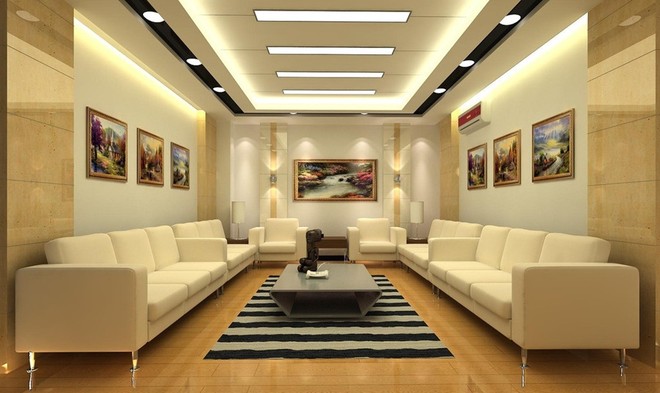Sukhmani
Tired of the boring concrete ceilings of your home? Why not get yourself a false ceiling! False ceilings are suspended about a foot or so from the main ceiling of a room. In simple words, it’s a second ceiling created below the original ceiling. Effective building design requires balancing multiple objectives like aesthetics, acoustics, environmental factors and integration with the building’s infrastructure. Hence, there arises the need for a false ceiling. False ceilings have today become an indispensible feature in interior designing.
There are basically five main uses of installing a false ceiling:
- To hide service lines like air-conditioning and electrical wirings etc.
- To accommodate lighting systems and provide lighting effect. A ceiling that reflects more light can reduce electricity costs.
- To sound-proof a room.
- To insulate a room.
- As a design element to create various shapes and curves.
Various types
Gypsum board: Ceilings made from gypsum board are quick to install and can be used to make various shapes. It is economical, light-weight, fire and moisture resistant, sound and water-proof. When exposed to fire, gypsum gives out water, which is converted to steam and helps combat the fire. This is what makes the ceiling fireproof. A suspended gypsum board ceiling can be constructed by nailing gypsum board panels to each other, or by fixing the panels in a metal grid. Soon after installation, it can be painted or decorated with wallpaper.
Metal ceilings: These are ceilings created with metal panels. Aluminium and steel panels are mostly used. Tin ceilings are also gaining popularity in India. These are sophisticated, light-weight and fire-proof. Mostly used in modern decor, they blend very well with glass.
Fibreboard or mineral tiles: These are advance decorative materials, which have features of decoration, sound absorption and insulation. These are also fire-proof. Fibreboard is board reinforced with vegetable fibre, wood and agri-waste. Mineral tiles are ceramic reinforced with natural stone.
PVC ceilings: PVC ceilings are light in weight and moisture resistant. This extremely practical ceiling system is suitable for any area requiring a fixed, non-porous ceiling. They are waterproof, termite-proof, fire-retardant, economical and maintenance-free. They come in various colours and require no decoration and polishing.
Plaster of Paris: POP is mixed with water and applied to a fibre board or a wire mesh to give a smooth uniform finish. These ceilings are usually very sturdy. Although messy to construct, these ceilings are the most preferred choice among designers today.
Plywood ceilings: Plywood ceilings are usually used for their visual appeal. They are made by strips of ply nailed or glued together. They are not an ideal option for hot and humid areas, as they are difficult to maintain and are prone to termite.
Stretch ceilings: Stretch ceilings are made of polyvinyl chloride membrane that stretches and clips into a track. The material can be printed or decorated any way you want before fixing. It is the most versatile and preferred choice amongst designers today.
Note worthy
The only concern with a false ceiling is the fact that if not done properly, they can provide a breeding space for pests. Before choosing the type of ceiling you want installed, make sure to ask about the strength and durability. Lastly, go in for a false ceiling only if your room has a high ceiling, where coming down by about a foot will not make the ceiling look low.
(Sukhmani is a Chandigarh-based interior and landscape designer)
Unlock Exclusive Insights with The Tribune Premium
Take your experience further with Premium access.
Thought-provoking Opinions, Expert Analysis, In-depth Insights and other Member Only Benefits
Already a Member? Sign In Now










